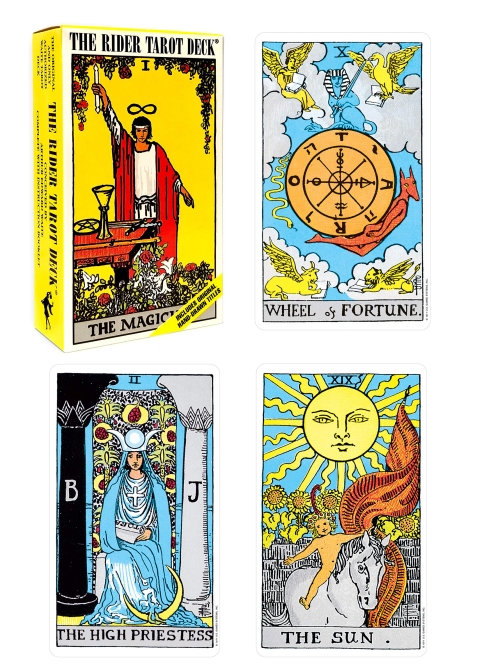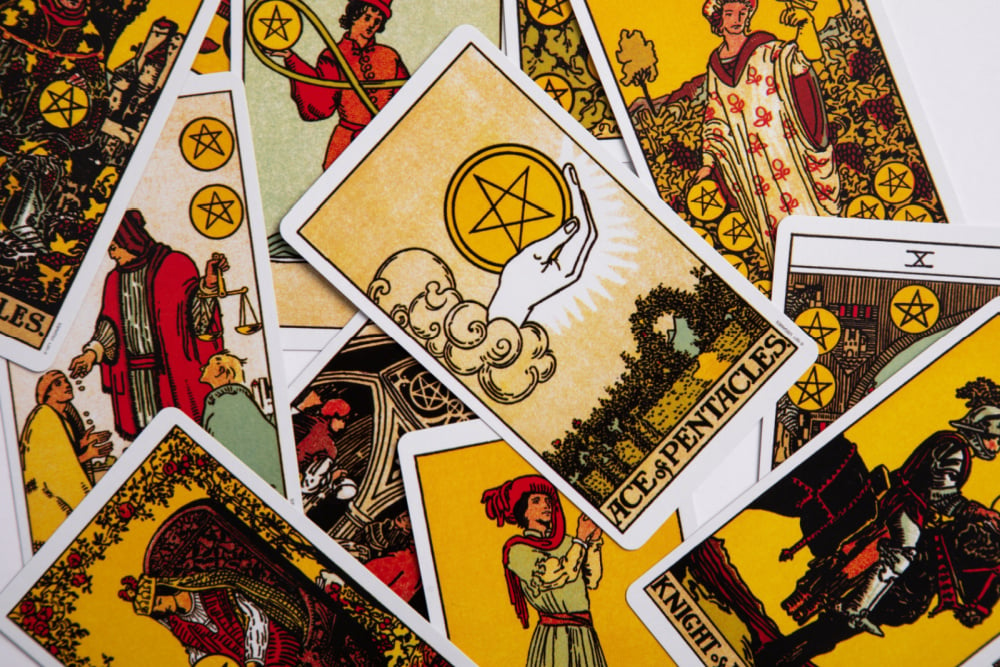
It is possible to read tarot decks intuitively. However, you must know a few things before you begin. Rose suggests closing your eye when you're shuffleing the cards, and asking for guidance through your spirit guides. Meditating can help you tap into your intuition. Your inner knowing will help you to overcome fear, doubt, anxiety, and analyze.
Reading tarot cards with intuition
Tarot card reading can be made easier by intuition. You need to practice it. It is not a science. There are many methods to improve your intuition and increase your sense of self. Engaging in mindfulness practices will help you to feel more in tune and in tune with your experience.
Try to look at the entire picture when you're trying to interpret a card. If you do this, you will gain insight by merging the imagery on the card into a larger story. Intuitive tarot readers can see the whole picture in a card. The traditional keywords of the card The Empress are nurturing, abundance and feminine energy. It can also be used to refer to pregnancy and the birth of a baby.

Intuition is often quiet and subtle. It can come as a feeling or a voice in your head. You may feel a physical sensation.
There are some things you should know about intuitive tarot cards readings
Intuitive Tarot readings can be performed with a few basic rules. The first is that you should not try to read someone else's cards without reading their own. Because your intuition might differ from that of the tarot card reader.
The second thing to remember when reading intuitively is to keep your eyes open and your hearts clear. By keeping a clear mind, you will have more confidence. Practice is the first step to gaining an intuitive reading. Meditation can be a great way of practicing and can help to connect with your inner knowing.
A Tarot deck is the next step to learning how to use intuition. Choose a card to start with and lay it face-down. Ask for help in understanding what the card means. You shouldn't attempt to guess the meaning of the card by yourself. Instead, you can redirect your focus. You may get an image, flash of colour, hear a song or feel a message from the body.

Origin of tarot cards
It is hard to trace the origins of intuitive tarot decks, but they have been around for many centuries. It is believed that the cards were first used as predictions and games. Tarot cards were first used for mystical purposes by Jean-Baptiste Alliette in 1785. He created links between the illustrated card and astrology, and ancient Egyptian lore.
While the earliest tarot decks were likely based on Egyptian or Roman myths, there are many theories of their origin. Most people believe that the Mamluks invented the tarot, which was a tribe of people living in the eastern Mediterranean. However, this theory doesn't explain why 21 trumps are a separate suit. The Italian Renaissance was where the earliest surviving tarot cards were created. They gained popularity among aristocratic courtiers. In 15th century Italy, tarot cards were known as trionfi. These cards contained symbols of the Roman Empire, such as triumphs. They were also used in carnivals.
To interpret intuitive tarot decks, you can feel them. If you feel heavy in your chest, it could be a sign of grief and heartache. Similar to a heavy stomach, it could indicate an energetic state.
FAQ
What are observation hobbies?
Observation hobbies are activities where you observe people doing what they do. They might include watching sports, reading books, going on holiday, etc. It could also be observing other people as well.
You can learn creativity through observation hobbies. You can use this knowledge later when you're working on projects for yourself or others.
You will discover that learning is easier when you are interested.
You might watch or read about football to learn more. To learn more about photography, it is possible to visit and take photos.
You could also buy a guitar or play along online to music if you are a musician.
You could also choose to cook at home or go to restaurants if you are a good cook.
If gardening is your passion, you can grow vegetables and flowers.
If you are a fan of dancing, you can join a class or go out with your friends to learn.
You can paint pictures if your passion is painting.
Write poetry and stories if that is what you love to do.
You could also draw pictures if you enjoy drawing.
You could work as a caretaker or keeper at a zoo if you are passionate about animals.
If you like science, you could study biology, chemistry, physics or maths.
If history is your passion, you can either read books or watch films. Or you could listen to podcasts.
You could explore the world or travel to places you love if you are a lover of traveling.
How do I find a hobby that interests me?
It can feel overwhelming to start your search for a hobby when you first begin.
You might think, "I'm not very talented," "I struggle at sports," "I don't really know anything."
The truth is that you likely already have a lot experience in your chosen hobby.
It's not that you don’t realize it yet.
Take a look at the contents of your home. How many things do you own?
Do you still have toys?
Perhaps you own a collection or magazines.
Perhaps you've always wanted a career in cooking.
Perhaps you just want to pick up the guitar again.
Whatever your hobby, it's possible to make it a hobby.
Realize that you have many experiences already.
Once you do that, you can choose a hobby to fit your life.
What are good hobby ideas?
It's the hobbies you are most passionate about that make you happy. If you love what you do then you'll find it much easier to keep going. You will have a reason when you feel sick or tired.
Our hobbies include painting, crafts, photography and cooking.
Volunteering could be a great option.
Suppose you're looking for something more adventurous. Why not take up scuba diving, rock climbing, sky diving, bungee jumping, white water rafting, sailing, surfing, canoeing, kayaking, horse riding, zip lining, hang gliding, paragliding, skydiving, snowboarding, skiing, mountain biking, hiking, camping, fishing, hunting, archery, shooting, clay pigeon shooting, target shooting, golf, tennis, swimming, snorkeling, windsurfing, waterskiing, kitesurfing, wakeboarding, standup paddle boarding, hang gliding, parasailing, hot air ballooning, paragliding and many more.
There are many unique ways to spend time in the outdoors, whether you're looking for adventure or a more traditional way to do it. These include caving.
Statistics
- Almost 80% of people claim to have no hobby. (hobbylark.com)
- A new survey by Pew Research Center of teens ages 13 to 17 finds that 36% of girls feel tense or nervous about their day every day; 23% of boys say the same. (pewresearch.org)
- I am 100% biologically a woman (discover.hubpages.com)
- 37% Video Games 36% Travel 36% Health and Fitness (quizexpo.com)
- This 100% accurate personality-analyzing hobby quiz discovers your passion based on your characteristics. (quizexpo.com)
External Links
How To
How to get started gardening
Gardening is one among the oldest forms. You need patience, perseverance, and determination. It is important to choose the right location for your garden. It could be large land, or just your backyard. Next, choose what kind of plants you would like to grow. Are you more fond of flowers or vegetables? Some people like to grow herbs and others enjoy raising livestock, such as rabbits. Before you decide on the type of crops you want to plant, it is important to consider the space available. If you live in a climate that experiences cold winters, then you might decide to grow fruits or berries as they do well in colder climates.
After choosing what you want to plant you need to prepare your soil. Soil is essential in determining whether your plants will thrive or fail. Organic matter is essential for the health and well-being of your plants. Organic matter is made up of leaves, twigs grass clippings, manure and compost. Once you have prepared your soil, you need to add nutrients. The type of plant you intend to grow will dictate the amount of nutrients you need. To determine these values, you can use a fertilizer calculator online. Many fertilizers are on offer, so make sure that you know which one you are buying.
After you have prepared the soil and added nutrients, it is time to wait for your seeds germination. This process usually takes anywhere from 2 weeks to 3 months, depending on the weather and the temperature in your area. After your seeds sprout, it is important to water them frequently. You can endanger your plants if you water them too often or too little. Overwatering can cause problems. Overwatering can result in root rot, fungal diseases, and even death. When watering your plants, remember that most plants require less water during the warm summer months than in winter. You should also remember that some plants will need to dry out once they have been watered. Tomatoes for instance need to remain slightly moist, but not wet. They are not happy to be in soggy soil. After they have finished flowering, they must go dormant. Dormancy occurs when plants stop producing any new growth and start to store energy for the next harvest. Dormancy is when the plant stops sending signals back to its roots for food production. Plants continue to store energy throughout this period. If temperatures fall below freezing or the plants are not getting enough sunlight, they will die.
Living in urban areas may restrict the types of plants you can plant. Concrete sidewalks, roads, buildings and parking lots are all common in urban areas. These blocks block sunlight from reaching ground level. Concrete absorbs sunlight and blocks the soil below from receiving adequate sun exposure. Because of this lack of sunlight, many plants cannot survive in cities. There are still plants that thrive in urban environments. Many perennials, trees, and shrubs are able to adapt to urban living. Many annuals can also grow indoors in pots. You can bring greenery inside your home all year round, regardless of the weather.
You are now ready for planting!